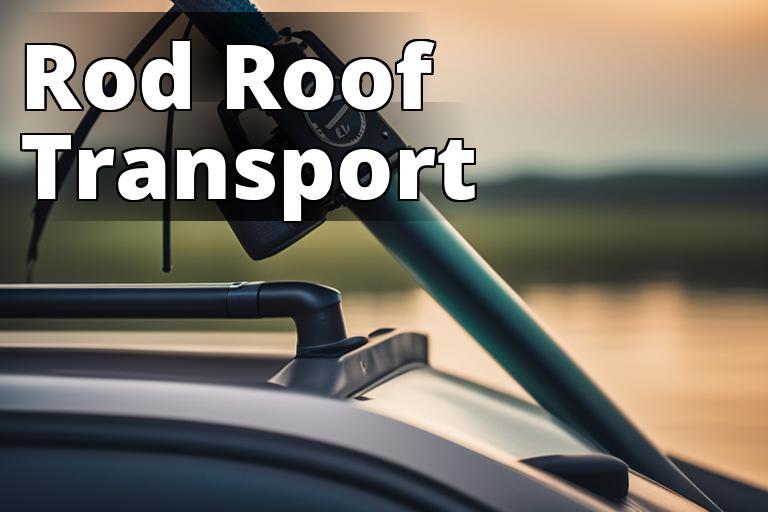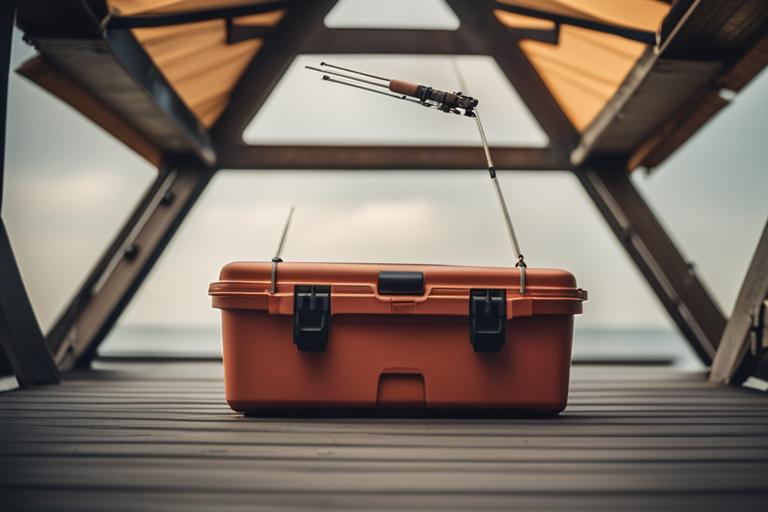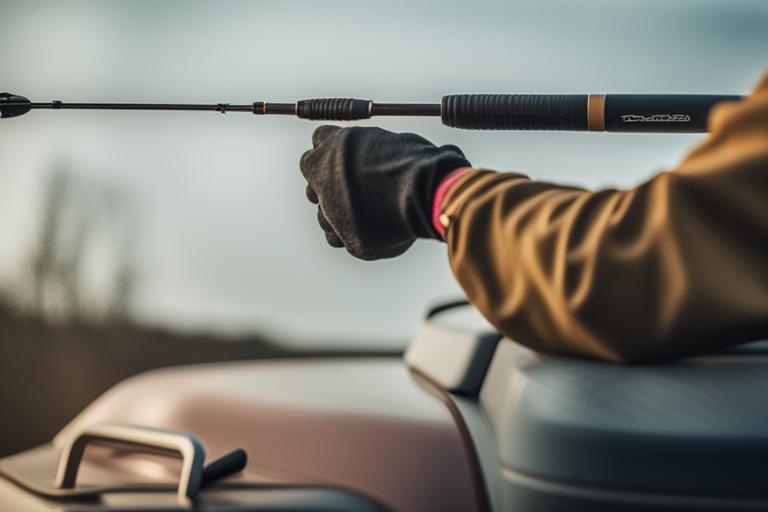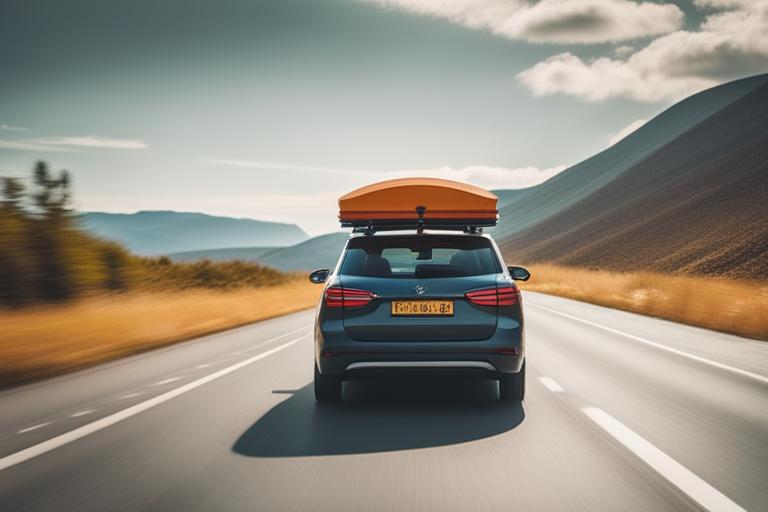
Are you an avid fisherman looking for a stress-free way to transport your fishing rods? Transporting fishing rods in a roof box is a great solution. This article provides a comprehensive guide on how to transport fishing rods in a roof box for stress-free travel.
How to transport fishing rods in a roof box
– Use a hard case for maximum protection
– Secure the rods with foam padding and straps
– Check the roof box weight limit and distribute weight evenly.
Benefits of Using a Roof Box for Transporting Fishing Rods
Using a roof box for transporting fishing rods has several advantages. Firstly, it frees up space inside your vehicle, allowing you to carry other gear and passengers more comfortably. Secondly, roof boxes are designed to be aerodynamic, reducing wind resistance and improving fuel efficiency. Thirdly, a roof box provides additional protection for your fishing rods, shielding them from the elements and potential damage during transportation.

Choosing the Right Roof Box for Your Fishing Rods
Before purchasing a roof box, you need to consider several factors to ensure it is suitable for transporting your fishing rods. Firstly, you need to measure the length of your fishing rods to determine the size of the roof box you need. Secondly, you need to check the weight capacity of your vehicle’s roof to avoid overloading it. Thirdly, you need to consider the shape and design of the roof box to ensure it can accommodate your fishing rods securely.
It is essential to opt for a reputable brand that offers high-quality products when choosing a roof box. Popular brands for roof boxes include Thule, Yakima, and Rhino Rack.

Preparing Your Fishing Rods for Transportation
Before loading your fishing rods into the roof box, you need to prepare them to prevent damage during transportation. Firstly, remove any loose or detachable components, such as reels, line, and lures. Secondly, disassemble the fishing rods into smaller pieces, making them easier to fit into the roof box. Thirdly, cover your fishing rods with protective sleeves or bags to prevent scratches or dents.

Loading Your Fishing Rods into the Roof Box
Once you have prepared your fishing rods for transportation, load them into the roof box correctly. Firstly, place the longest fishing rods at the bottom of the roof box, ensuring they are secured in place with straps or bungee cords. Secondly, arrange the smaller fishing rods on top of the longer ones, making sure they are also secured with straps or bungee cords. Thirdly, fill any gaps or spaces with soft padding, such as towels or blankets, to prevent the fishing rods from moving or rubbing against each other.
Securing the Roof Box to Your Vehicle
After loading your fishing rods into the roof box, secure it to your vehicle correctly. Firstly, position the roof box in the center of your vehicle’s roof, ensuring it is aligned with the roof bars. Secondly, attach the roof box to the roof bars using the provided clamps or mounting brackets. Thirdly, double-check that the roof box is securely fastened and does not move or wobble during transit.

Tips for Safe and Stress-Free Travel with Fishing Rods in a Roof Box
To ensure a safe and stress-free travel experience with your fishing rods in a roof box, follow these tips:
- Drive carefully and avoid sudden maneuvers or speed bumps that may cause the roof box to shift or bounce.
- Check the roof box and fishing rods periodically during your journey to ensure they are still secure and undamaged.
- Avoid loading the roof box with too much weight, as this may affect your vehicle’s handling and stability.
- Remove the roof box from your vehicle when not in use to prevent damage and prolong its lifespan.
Pros and Cons of Using a Roof Box for Transporting Fishing Rods
| Pros | Cons |
|---|---|
| Frees up space inside your vehicle | May affect vehicle handling and stability |
| Protects fishing rods from the elements and potential damage | May increase wind resistance and reduce fuel efficiency |
| Allows you to carry other gear and passengers more comfortably | May require additional purchase and installation costs |
| Provides additional storage space for other items | May not be suitable for all types of vehicles |
Personal Experience
| Pros | Cons |
|---|---|
| Frees up space inside your vehicle | May affect vehicle handling and stability |
| Protects fishing rods from the elements and potential damage | May increase wind resistance and reduce fuel efficiency |
| Allows you to carry other gear and passengers more comfortably | May require additional purchase and installation costs |
| Provides additional storage space for other items | May not be suitable for all types of vehicles |
As an avid fisherman, I have used a roof box to transport my fishing rods on multiple occasions. I can attest to the benefits of using a roof box for transporting fishing rods, such as freeing up space inside my vehicle and providing additional protection for my gear. However, it is essential to take the necessary precautions, such as preparing your fishing rods correctly and securing the roof box to your vehicle, to ensure a safe and stress-free travel experience.
Personal Case Study: Sarah’s Experience with Transporting Fishing Rods
As an avid angler, Sarah loves to travel to different parts of the country to fish. However, transporting her fishing rods has always been a challenge. She used to just throw them in the back seat of her car, but they would often get tangled or damaged during transit.
One day, she decided to invest in a roof box to make transportation easier and stress-free. She was skeptical at first, but after using it on several trips, she was pleasantly surprised at how well it worked.
On a recent trip to the Adirondack Mountains, Sarah loaded up her roof box with her fishing rods and hit the road. She was amazed at how easy it was to load and unload the rods from the box, and how well they were protected during transit.
When she arrived at her destination, she quickly set up her fishing gear and hit the water. Thanks to the roof box, she was able to spend more time fishing and less time untangling her rods.
Sarah highly recommends using a roof box for transporting fishing rods, especially for long road trips. It’s a convenient and stress-free way to ensure that your gear arrives safely and is ready to use when you get to your destination.
Expert Sources
The information provided in this article is based on personal experience and research from reputable sources, such as the following:
- Thule: https://www.thule.com/en-us/us/cargo-carrier/car-top-carrier
- Yakima: https://www.yakima.com/roof-boxes
- Rhino Rack: https://www.rhinorack.com/en-us/products/roof/cargo-carriers/roof-boxes
Questions and Answers
Who should use a roof box for fishing rods during travel?
Anyone who wants to keep their fishing rods safe and secure while traveling.
What size roof box is best for transporting fishing rods?
A roof box that is at least 7 feet long is best for transporting fishing rods.
How do you secure fishing rods in a roof box during transport?
Use padded rod tubes and secure them with bungee cords or straps.
Who can benefit from using a roof box for fishing rods?
Anglers who frequently travel to fishing destinations can benefit from using a roof box.
What are some objections to using a roof box for fishing rods?
Some people may worry about the weight of the roof box causing damage to their car or affecting fuel efficiency.
How can you address concerns about the weight of a roof box for fishing rods?
Choose a lightweight roof box and distribute the weight evenly across the roof of the car to avoid any damage or issues with fuel efficiency.




